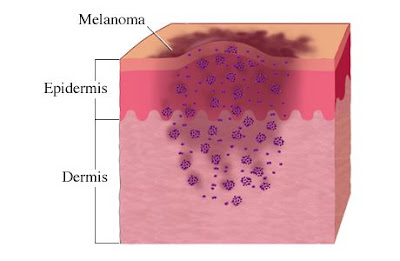1. What are cancers of the head and neck?
Cancers
that are known collectively as head and neck cancers usually begin in
the squamous cells that line the moist, mucosal surfaces inside the head
and neck (for example, inside the mouth, the nose, and the throat).
These squamous cell cancers are often referred to as squamous cell carcinomas of the head and neck.
Head and neck cancers can also begin in the salivary glands, but
salivary gland cancers are relatively uncommon. Salivary glands contain
many different types of cells that can become cancerous, so there are
many different types of salivary gland cancer.
Cancers of the head
and neck are further categorized by the area of the head or neck in
which they begin. These areas are described below and labeled in the
image of head and neck cancer regions.













